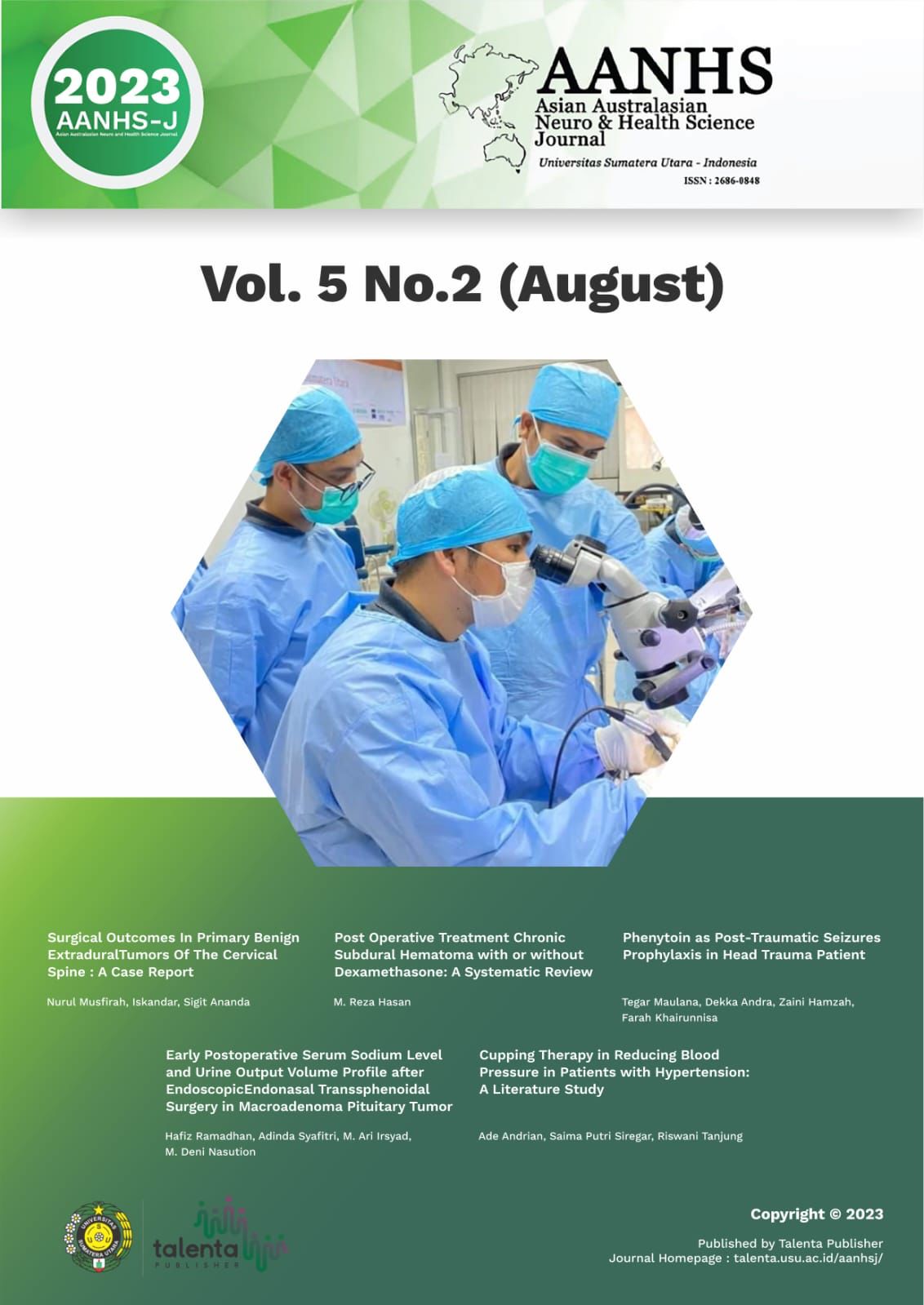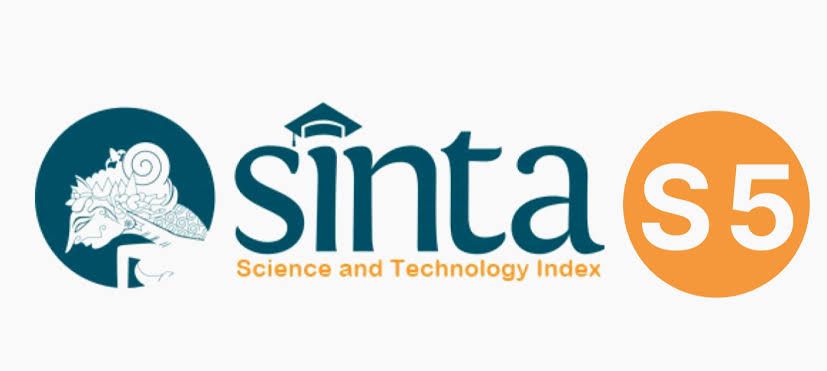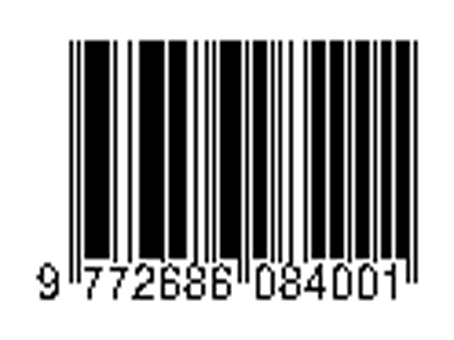PHENYTOIN AS A PROPHYLAXIS OF POST-TRAUMATIC SEIZURES IN HEAD TRAUMA PATIENTS AT JAKARTA ISLAMIC HOSPITAL CEMPAKA PUTIH IN 2020-2022
DOI:
https://doi.org/10.32734/aanhsj.v5i2.12507Keywords:
Post-trauma seizure, Phenytoin, Prophylaxis, Head TraumaAbstract
Introduction: Post-traumatic seizures can occur as a complication of head injury, whether it is immediately after the head injury to months or years after. Phenytoin is an anti-epileptic drug that has been used widely as a prophylaxis for posttraumatic seizures.
Method: The study was conducted retrospectively using medical records of head trauma patients in hospitals in 2020-2022 on 54 samples treated up to seven days post-trauma. Samples were obtained which were then analyzed by medical records, looking at the patient's identity, patient diagnosis, seizure symptoms, and history of anti-seizure drugs.
Result: Patients given phenytoin prophylaxis [22 (40.7%)] who did not have seizures [18 (33.3%)] were more than patients who had seizures [4 (7.4%)]. Similar results occurred in patients without phenytoin prophylaxis [32 (59.3%)], more patients with no seizures [30 (55.6%)] than those with seizures [2 (3.7%)].
Conclusion: The usage of phenytoin is still not routinely given to post-traumatic head patients at RSIJ Cempaka Putih. The administration is carried out on a case-by-case basis assessment must be carried out in determining the use of phenytoin as a seizure prophylactic so that the benefits outweigh the side effects. For further research, it is recommended to conduct an EEG examination on head trauma patients to determine the diagnosis of post-traumatic seizures/epilepsy and conduct further seizure evaluation.
Keywords: Post-trauma seizure; Phenytoin; Prophylaxis; Head Trauma; Jakarta Islamic Cempaka Putih Hospital
Downloads
Downloads
Published
How to Cite
Issue
Section
License
Copyright (c) 2023 Asian Australasian Neuro and Health Science Journal (AANHS-J)

This work is licensed under a Creative Commons Attribution-ShareAlike 4.0 International License.
The Authors submitting a manuscript do understand that if the manuscript was accepted for publication, the copyright of the article shall be assigned to AANHS Journal.
The copyright encompasses exclusive rights to reproduce and deliver the article in all forms and media. The reproduction of any part of this journal, its storage in databases and its transmission by any form or media will be allowed only with a written permission from Asian Australasian Neuro and Health Science Journal (AANHSJ).
The Copyright Transfer Form can be downloaded here.
The Copyright form should be signed originally and sent to the Editorial Office in the form of original mail or scanned document.














